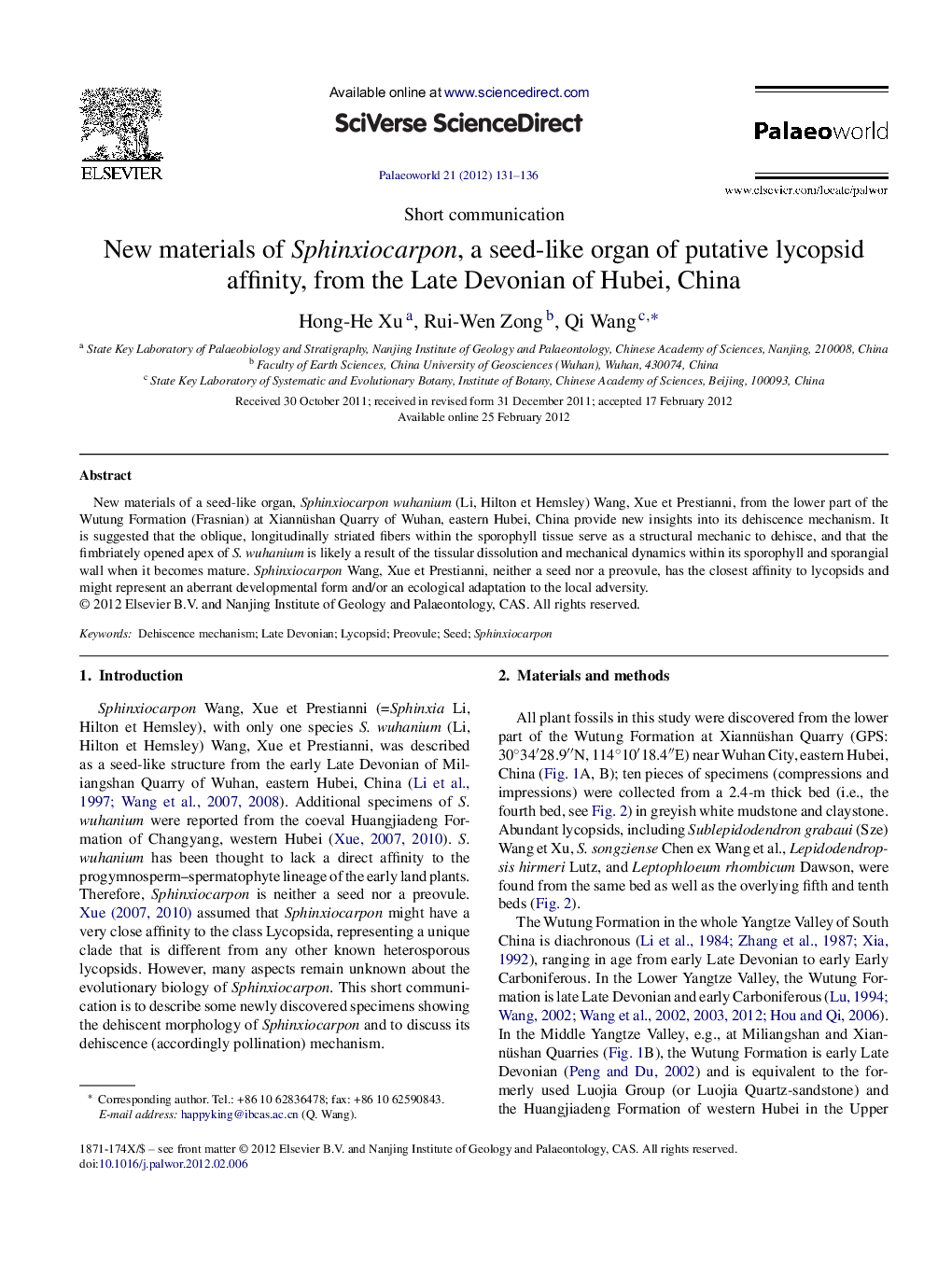| Article ID | Journal | Published Year | Pages | File Type |
|---|---|---|---|---|
| 4749748 | Palaeoworld | 2012 | 6 Pages |
New materials of a seed-like organ, Sphinxiocarpon wuhanium (Li, Hilton et Hemsley) Wang, Xue et Prestianni, from the lower part of the Wutung Formation (Frasnian) at Xiannüshan Quarry of Wuhan, eastern Hubei, China provide new insights into its dehiscence mechanism. It is suggested that the oblique, longitudinally striated fibers within the sporophyll tissue serve as a structural mechanic to dehisce, and that the fimbriately opened apex of S. wuhanium is likely a result of the tissular dissolution and mechanical dynamics within its sporophyll and sporangial wall when it becomes mature. Sphinxiocarpon Wang, Xue et Prestianni, neither a seed nor a preovule, has the closest affinity to lycopsids and might represent an aberrant developmental form and/or an ecological adaptation to the local adversity.
